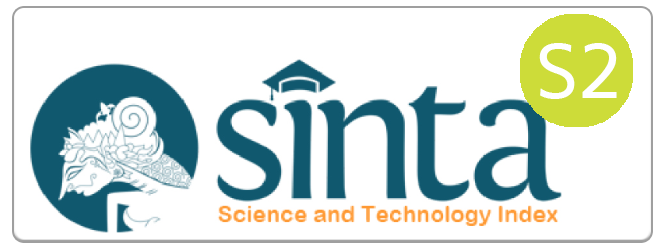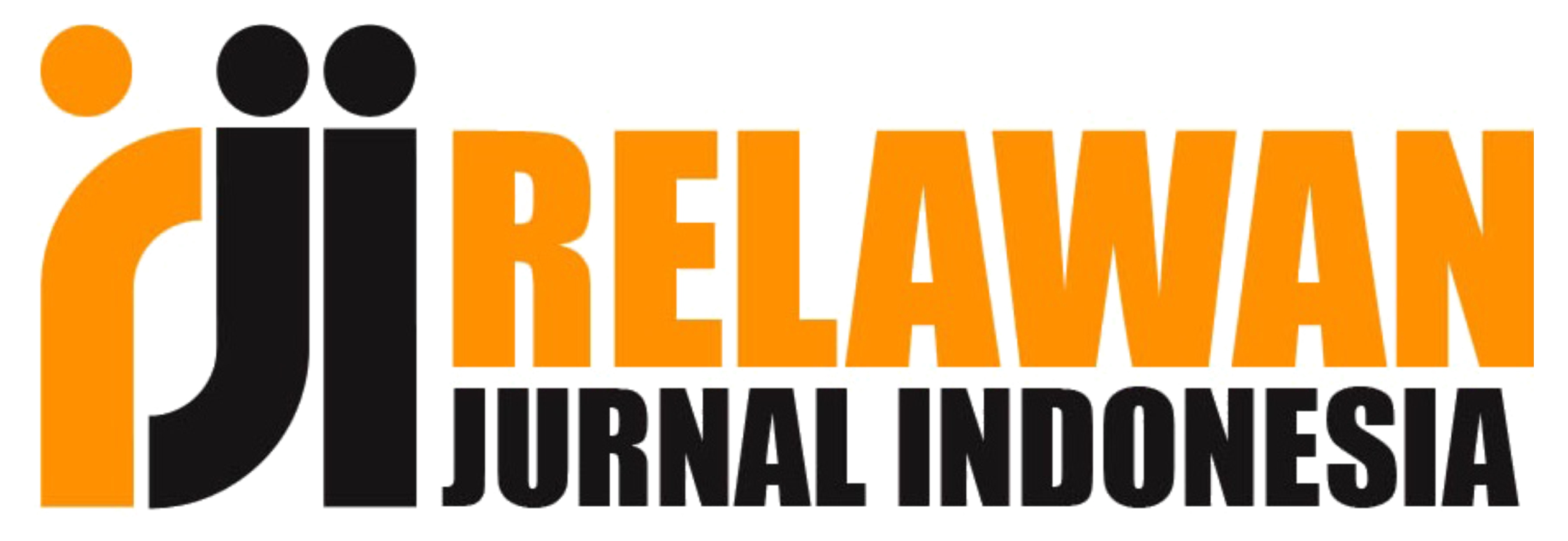Determinants of United States - Indonesia Equity Market’s Dynamic Correlation: The Role of Commodities and Exchange Rate’s Volatilities
Abstract
This study aims to analyze the effect of oil price volatility, gold price volatility and exchange rate volatility on the dynamic relationship between Indonesian and United States capital market. The data used in this study are daily closing prices of oil, gold and exchange rates (USD/IDR) as well as Indonesian capital market (JKSE) and United States capital market (DJIA) composite indices during period of January 2005 to October 2020. This study uses DCC-GARCH method to calculate the dynamic correlation between two capital markets and GARCH with the GED parameter to analyze oil volatility, gold volatility and exchange rate volatility on the integration of Indonesian capital market and United States capital market. The results of this study show positive and strong results on the integration of Indonesian and United States capital markets, thus proving that the movements of Indonesian market and American market tend to be strong and mutually influence the two capital markets. Moreover, the oil, gold and exchange rates volatilities have a negative effect on the integration of the Indonesia capital market and the US capital market. This finding implies investors should take oil, gold and exchange rates volatilities in their investment consideration.
Keywords
Full Text:
PDFReferences
Akhtaruzzaman, M., Boubaker, S., Lucey, B. M., & Sensoy, A. (2021). Is gold a hedge or a safe-haven asset in the COVID–19 crisis? Economic Modelling, 102. doi:https://doi.org/10.1016/j.econmod.2021.105588
Aravind, M. P., & Nayar, J. (2020). Integration of oil with macroeconomic indicators and policy challenges in regard to Oman. International Journal of Energy Sector Management, 14(1), 172-192. doi:https://doi.org/10.1108/IJESM-08-2018-0006
Arfaoui, M., & Ben Rejeb, A. (2017). Oil, gold, US dollar and stock market interdependencies: a global analytical insight. European Journal of Management and Business Economics, 26(3), 278-293. doi:https://doi.org/10.1108/ejmbe-10-2017-016
Babatunde, M. A. (2015). Oil price shocks and exchange rate in Nigeria. International Journal of Energy Sector Management, 9(1), 2-19. doi:https://doi.org/10.1108/IJESM-12-2013-0001
Bala, D. A., & Takimoto, T. (2017). Stock markets volatility spillovers during financial crises: A DCC-MGARCH with skewed- t density approach. Borsa Istanbul Review, 17(1), 25-48. doi:https://doi.org/10.1016/j.bir.2017.02.002
Banik, B., & Roy, C. K. (2021). Effect of exchange rate uncertainty on bilateral trade performance in SAARC countries: a gravity model analysis. International Trade, Politics and Development, 5(1), 32-50. doi:https://doi.org/10.1108/ITPD-08-2020-0076
Batten, J. A., Kinateder, H., Szilagyi, P. G., & Wagner, N. F. (2019). Time-varying energy and stock market integration in Asia. Energy Economics, 80, 777-792. doi:https://doi.org/10.1016/j.eneco.2019.01.008
Bollerslev, T. (1986). Generalized autoregressive conditional heteroscedasticity. Journal of Econometrics, 31, 307-327. doi:https://doi.org/10.1016/0304-4076(86)90063-1
Chevallier, J., Nguyen, D. K., Siverskog, J., & Uddin, G. S. (2018). Market integration and financial linkages among stock markets in Pacific Basin countries. Journal of Empirical Finance, 46, 77-92. doi:https://doi.org/10.1016/j.jempfin.2017.12.006
Dada, J. T. (2021). Asymmetric effect of exchange rate volatility on trade in sub-Saharan African countries. Journal of Economic and Administrative Sciences, 37(2), 149-162. doi:https://doi.org/10.1108/JEAS-09-2019-0101
Devos, E., & Li, H. (2021). Vertical integration to mitigate internal capital market inefficiencies. Journal of Corporate Finance, 69, 101994. doi:https://doi.org/10.1016/j.jcorpfin.2021.101994
Do, H. Q., Bhatti, M. I., & Kónya, L. (2016). On ASEAN capital market and industry integration: A review. Corporate Ownership & Control, 13(2), 8-22. doi:https://doi.org/10.22495/cocv13i2p1
Filis, G., Degiannakis, S., & Floros, C. (2011). Dynamic Correlation between Stock Market and Oil Prices: The Case of Oil-Importing and Oil-Exporting Countries. International Review of Financial Analysis, 20(3), 152-164. doi:https://doi.org/10.1016/j.irfa.2011.02.014
Gisser, M., & Goodwin, T. H. (1986). Crude Oil and the Macroeconomy: Tests of Some Popular Notions: Note. Journal of Money, Credit and Banking, 18(1), 95-103.
Gugler, P., & Vanoli, L. (2017). Convergence or divergence of prosperity within the ASEAN community? A crucial issue for the success of the ASEAN economic community (AEC) process. International Journal of Emerging Markets, 12(3), 610-624. doi:https://doi.org/10.1108/IJoEM-09-2016-0231
Habiba, U. E., Peilong, S., Zhang, W., & Hamid, K. (2020). International stock markets Integration and dynamics of volatility spillover between the USA and South Asian markets: evidence from Global financial crisis. Journal of Asia Business Studies, 14(5), 79-794. doi:https://doi.org/10.1108/JABS-03-2019-0071
Hammoudeh, S. M., Yuan, Y., McAleer, M., & Thompson, M. A. (2010). Precious Metals–Exchange Rate Volatility Transmissions and Hedging Strategies. International Review of Economics and Finance, 19, 633-647.
Handayani, H., Muharam, H., Mawardi, W., & Robiyanto, R. (2018). Determinants of the Stock Price Volatility in the Indonesian Manufacturing Sector. International Research Journal of Business Studies, 11(3), 179-193. doi:https://doi.org/10.21632/irjbs.11.3.179-193
Jiang, Y., Jiang, C., Nie, H., & Mo, B. (2019). The time-varying linkages between global oil market and China's commodity sectors: Evidence from DCC-GJR-GARCH analyses. Energy, 166(1), 577-586. doi:https://doi.org/10.1016/j.energy.2018.10.116
Joo, Y. C., & Park, S. Y. (2021). The impact of oil price volatility on stock markets: Evidences from oil-importing countries. Energy Economics, 101, 105413. doi:https://doi.org/10.1016/j.eneco.2021.105413
Karim, B. A., Jais, M., & Karim, S. A. A. (2011). The Subprime Crisis and Stock Index Futures Markets Integration. The Journal of Risk Finance, 12(5), 400-408. doi:https://doi.org/10.1108/15265941111176136
Karim, B. A., & Rahman, A. A. (2020). Market Integration in Asean-5: Evidence of Islamic and Conventional Stock Markets. Polish Journal of Management Studies, 21(1), 186-198. doi:http://dx.doi.org/10.17512/pjms.2020.21.1.14
Kumar, J. J. A., & Robiyanto, R. (2021). The Impact of Gold Price and Us Dollar Index: The Volatile Case of Shanghai Stock Exchange and Bombay Stock Exchange During the Crisis of Covid-19. Jurnal Keuangan dan Perbankan, 25(3), 508-531. doi:http://dx.doi.org/10.26905/jkdp.v25i3.5142
Makoto, R. (2020). Financial integration and macroeconomic volatility in Zimbabwe. Journal of Economics and Development, 22(2), 229-248. doi:https://doi.org/10.1108/jed-11-2019-0063
Morales, L. (2009). Interlinkages Between Equity, Currency, Precious Metals and Oil Markets: An Emphasis on Emerging Markets. (Doctor of Philisophy in Economic Dissertation), University of Limerick,
Padungsaksawasdi, C. (2020). On the dynamic relationship between gold investor sentiment index and stock market: A sectoral analysis. International Journal of Managerial Finance, 16(3), 372-392. doi:https://doi.org/10.1108/IJMF-11-2018-0334
Pandey, V. (2018). Volatility spillover from crude oil and gold to BRICS equity markets. Journal of Economic Studies, 45(2), 426-440. doi:https://doi.org/10.1108/jes-01-2017-0025
Putra, A. R., & Robiyanto, R. (2019). The effect of commodity price changes and USD/IDR exchange rate on Indonesian mining companies’ stock return. Jurnal Keuangan dan Perbankan, 23(103-115). doi:https://doi.org/10.26905/jkdp.v23i1.2084
Raji, J. O., Abdulkadir, R. I., & Badru, B. O. (2018). Dynamic relationship between Nigeria-US exchange rate and crude oil price. African Journal of Economic and Management Studies, 9(2), 213-230. doi:https://doi.org/10.1108/AJEMS-06-2017-0124
Robiyanto, R. (2018a). The dynamic correlation between ASEAN-5 stock markets and world oil prices. Jurnal Keuangan dan Perbankan, 22(2), 198-210. doi:https://doi.org/10.26905/jkdp.v22i2.1688
Robiyanto, R. (2018b). Indonesian Stock Market’s Dynamic Integration with Asian Stock Markets and World Stock Markets. Jurnal Pengurusan, 52, 181-192. doi:https://doi.org/10.17576/pengurusan-2018-52-15
Robiyanto, R., Frensidy, B., Setyawan, I. R., & Huruta, A. D. (2021). A Different View on ASEAN Capital Market Integration. Economies, 9(4). doi:https://doi.org/10.3390/economies9040141
Shabbir, A., Kousar, S., & Batool, S. A. (2020). Impact of gold and oil prices on the stock market in Pakistan. Journal of Economics, Finance and Administrative Science, 25(50), 279-294. doi:https://doi.org/10.1108/jefas-04-2019-0053
Shakil, M. H., Mustapha, I. h. M., Tasnia, M., & Saiti, B. (2018). Is gold a hedge or a safe haven? An application of ARDL approach. Journal of Economics, Finance and Administrative Science, 23(44), 60-76. doi:https://doi.org/10.1108/jefas-03-2017-0052
Suganda, T. R., & Hariyono, A. R. (2018). The Integration of ASEAN-5 Capital Market after the Donald Trump Election. Jurnal Keuangan dan Perbankan, 22(4), 656-669. doi:https://doi.org/10.26905/jkdp.v22i4.1990
Syahri, A., & Robiyanto, R. (2020). The correlation of gold, exchange rate, and stock market on Covid-19 pandemic period. Jurnal Keuangan dan Perbankan, 24(3). doi:https://doi.org/10.26905/jkdp.v24i3.4621
Thampanya, N., Nasir, M. A., & Huynh, T. L. D. (2020). Asymmetric correlation and hedging effectiveness of gold & cryptocurrencies: From pre-industrial to the 4th industrial revolution. Technological Forecasting and Social Change, 159, 120195. doi:https://doi.org/10.1016/j.techfore.2020.120195
Xu, W., Ma, F., Chen, W., & Zhang, B. (2019). Asymmetric volatility spillovers between oil and stock markets: Evidence from China and the United States. Energy Economics, 80, 310-320. doi:https://doi.org/10.1016/j.eneco.2019.01.014
Yousaf, I., Hanif, H., Ali, S., & Moudud-Ul-Huq, S. (2021). Linkages between gold and Latin American equity markets: portfolio implications. Journal of Economics, Finance and Administrative Science, 26(52), 237-251. doi:https://doi.org/10.1108/JEFAS-04-2020-0139
Zinecker, M., Balcerzak, A. P., Faldzinski, M., Pietrzak, M. B., & Meluzin, T. (2016). Application of DCC-GARCH Model for Analysis of Interrelations Among Capital Markets of Poland, Czech Republic and Germany. Paper presented at the Proceedings of the International Scientific Conference Quantitative Methods in Economics Multiple Criteria Decision Making XVIII, Vratna. http://econpapers.repec.org/bookchap/pesecchap/12.htm
DOI: http://dx.doi.org/10.56444/mem.v38i2.3595
Article Metrics
Abstract view : 1466 timesPDF - 0 times
Refbacks
- There are currently no refbacks.
Copyright (c) 2023 Media Ekonomi dan Manajemen

This work is licensed under a Creative Commons Attribution 4.0 International License.

This work is licensed under a Creative Commons Attribution 4.0 International License.







